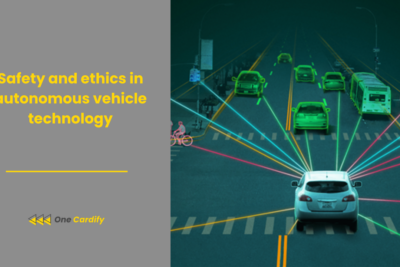
VR's role in enhancing remote collaboration
The importance of virtual reality (VR) in enhancing team collaboration, especially in dispersed teams, in the modern work environment is hard to overstate. This blog discusses the transformative capacity of VR technology for turning remote team work more immersive, interactive, and productive.VR removes geographical limitations and provides a common virtual environment, allowing a level of inteaction and engagements that conventional video conferencing tools cannot reproduce. This technology jump offers great opportunities for businesses to come up with innovations in their collaborative practices.We start by looking at the VR mechanics in the working from home setting, we talk about the advantages it yields, and whether it is going to impact the future of work. Do come back to learn about how VR is changing the ways we associate, converse and cooperate in this digital era.
Understanding Virtual Reality in Remote Teamwork
Virtual reality is not just a gadget for gamers; rather, it is a developing technology that is changing the way remote working teams work together. VR creates a three dimensional space in the computer which is generated and in this way people can share the same space without one of them being physically present.Accessible through VR headsets, this virtual environment lets users interact with and control the virtual world as if they were present physically. VR is an immersive environment that promotes the sense of presence and togetherness among distributed teams, key to productive collaboration.In contrast to flat video calls, two-dimensional video calls, VR adds a spatial dimension to digital meetings where the participants are able to interact with digital objects and with each other in a more natural and intuitive way.With the use of VR, brainstorming sessions, project planning, and even informal team interactions can reach a level of depth and involvement that was previously attainable only in a real life meeting.
Related content
Related content
The Benefits of VR for Enhancing Teamwork
VR technology has many differences for improving collaboration of the remote teams. Initially, it addresses the loneliness of remote workers that are given a place for participation.Secondly, VR allows more realistic communication as body language and spatial awareness become a part of interaction dynamics which, in its turn, makes communication more efficient and deeper.In addition, VR can represent real-life situations, making it a perfect tool for training, role-playing, or prototyping in a risk-free environment. This use of VR advances not only team building but also speeds up the learning curve and creativity within teams.In the end, the newness and wonder of VR technology can increase team spirit and participation, and so create a more positive company culture.
Implementing VR in Remote Workplaces
Integration of VR for remote teamwork is a challenging process and should be thoughtfully elaborated. The initial stage is to select the appropriate VR platform and tools that go along with the requirements and the working process of your team.Training plays a vital role in making all team members at home and good in handling the VR space. Continued support and maintenance are also as important for an effective VR collaboration environment.Further, clear rules and protocols for VR interactions should be created for VR to support the emergence of a polite and efficient virtual working environment.VR integrated into daily work practices over time helps teams to slowly adjust to the technology, further to avoid being overwhelmed, to play and learn the most efficient ways in which VR can be used for collaboration.Taking into account user inputs and continually improving the setup of VR will make it a useful tool in promoting team collaboration.
Future Prospects
The potential of VR in improving remote cooperation is bright. With the advancement of technology, VR platforms will become more available, cheaper, and user-friendly. This transformation will probably result in penetration into many sectors.The augmented reality (AR) integration, among other emerging trends, is expected to enhance the collaborative experience by mixing of the virtual and real worlds. The implications of these transformative developments are more than just related to remote collaboration but extend to the whole remote work scenery.Furthermore, with the growing attention of companies to VR being an effective tool for overcoming the distances between the remote team members, we can expect the emergence of the VR applications aimed at different types of collaborative needs.In summary, Virtual Reality has a great power to change the remote collaboration into the more interactive, efficient, and fun process. Adoption of this technology may be a turning point for business that seeks to survive in a digital era.
VR is a technology that creates a simulated, three-dimensional world using computer-generated environments where users can immerse themselves using VR headsets.
VR enhances remote collaboration by providing a shared virtual space where team members can interact in a more immersive, interactive, and engaging manner than traditional video conferencing.
The benefits include reducing isolation, enabling authentic communication, simulating real-world scenarios for training, boosting creativity, and improving team morale and engagement.
Businesses can implement VR by selecting appropriate platforms, providing training, establishing guidelines for use, integrating VR into daily routines gradually, and listening to user feedback for improvements.
The future of VR in remote collaboration is promising, with advancements in technology making it more accessible and new trends, such as AR integration, enhancing collaborative experiences further.
While VR offers more immersive experiences, it's unlikely to completely replace traditional video conferencing tools due to accessibility and cost factors. However, it will complement and enrich remote collaboration.
Integrating VR can be challenging but manageable with proper planning, training, and gradual implementation. It requires adapting workflows and embracing new collaboration modalities.
Concluding Thoughts
VR becomes one of the most valuable instruments in boosting collaboration in the remote work environment as we pass through the digital era. The ability to produce environments that are immersive and interactive provides an uncommon answer to the problem created by physical distance and traditional means of communication.Although, integration of VR is a big challenge, the profit that it brings for teamwork, creativity and innovation is huge. By keeping pace with technological improvement and embracing new collaboration methods, VR delivers connection, engagement, and productivity in remote work spaces.The road to VR integration regarding remote cooperation is still in its infancy, but the destination is expected to be a change in how we work together, despite the distance.With the future in focus, the union of VR with other new technologies stands as a promising realm for cooperative innovation, so now is the right time for organizations to investigate and invest in VR solutions.






Related Posts